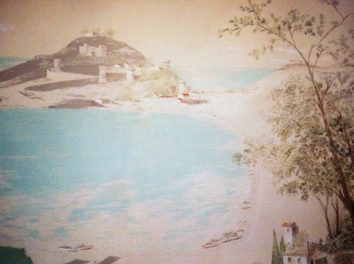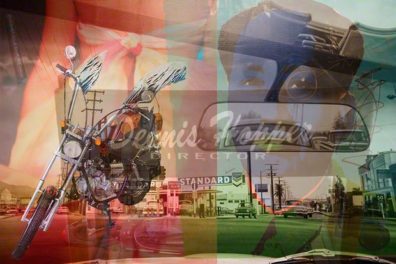
La Machine d’Argent, François-Thomas Germain, 1754
This spring the Museum is offering a feast of tours and courses about food in art. Nancy Real and Lilit Sadoyan, two gallery teachers, agreed to give me a taste. We went straight to the magnificent Machine d’argent by François-Thomas Germain, an 18th-century silver centerpiece.
This would have been just part of an elaborate centerpiece for the table, with multiple tiers that held sugar casters and condiments. We walk around the object and both teachers point out what’s there: two game birds, a rabbit, a cauliflower, truffle, turnip, onion, mushroom. Although they form one object, each item has a different, incredibly lifelike texture. Some were made from casts of actual animals and vegetables.
“This represents the dining of the elite,” explains Nancy, who has worked at the Getty for eight years. “The elite were the only ones who could hunt, because they owned the land.”
The Getty is lucky to have such an object in the collection. “It’s very unusual that it survived, because much of the silver was melted in the late 17th and 18th centuries,” says Lilit. As tastes changed, silver objects were often melted and transformed into pieces that were more fashionable. Louis XIV and Louis XV also demanded that silver objects be melted to replenish state treasuries. “To have something like this, of excellent quality, is an absolute gem,” explains Lilit.
Nancy points out the ortolan, a tiny songbird that French President Mitterand, when dying of cancer, requested for his last meal. An old but fraught French tradition, the preparation and eating of the ortolan bunting is elaborate: it is drowned in Armagnac, plucked and baked, then eaten whole, all while sitting under a tented linen to capture the vapors and, some say, to hide the act from God. Not only is the preparation now considered cruel, but the ortolan is endangered, so killing it is illegal (although eating it is not).
That being quite a lot to swallow, we move on to a tureen created by Germain’s father, Thomas Germain, who had been a master silver sculptor before his son. Crayfish, crabs, prawns that perch on top were cast from wax molds of actual shellfish. “Foods were prepared from kitchens separate from the palace,” Nancy explains. “They didn’t want odors or aromas of food around.”
“This is a functional piece, in addition to being decorative,” adds Lilit.
The galleries are also filled with less literal renderings of food, in paintings and in tapestries, as can be seen in the free gallery tours being held daily at 3:00 p.m. beginning tomorrow, April 27 (changing to 1:30 p.m. the week of June 22–27). Culinary workshops exploring decadent Parisian cuisine of the 18th century—as might have been served before the Machine d’argent—are also coming up this spring.




Comments on this post are now closed.